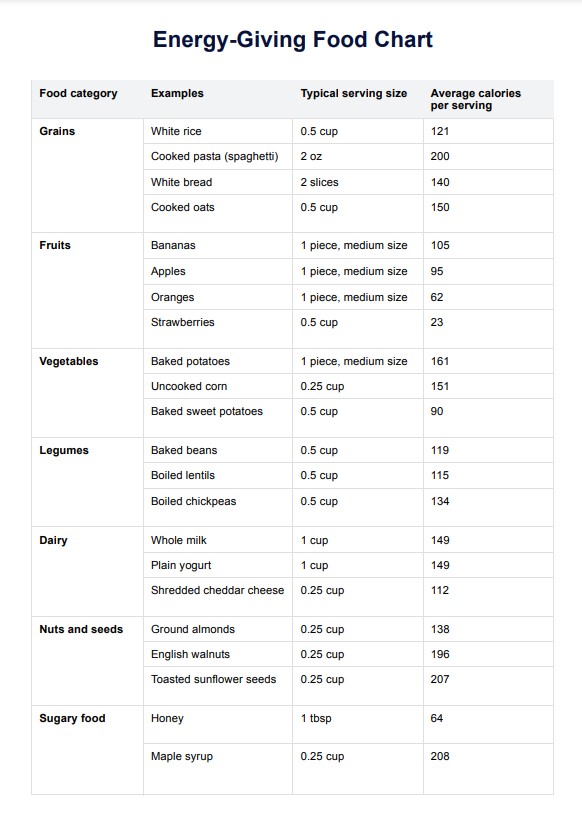To boost energy when feeling tired, consume foods that offer sustained energy like whole grains, fruits, nuts, and lean proteins. Staying hydrated and taking short breaks can also help.

Energy-giving Food Chart
Discover the power of our Energy-giving Food Chart Template, designed for health professionals to guide clients to an energy-boosting diet. Download now!
Use Template
Energy-giving Food Chart Template
Commonly asked questions
Foods high in refined sugar and simple carbohydrates can lead to energy crashes. Processed foods and heavy, fatty meals can also make you feel sluggish.
Foods rich in fiber, healthy fats, and protein, such as whole grains, fruits, vegetables, fish, and nuts, can provide sustained energy for elderly individuals. Staying hydrated is also essential for maintaining energy levels.
EHR and practice management software
Get started for free
*No credit card required
Free
$0/usd
Unlimited clients
Telehealth
1GB of storage
Client portal text
Automated billing and online payments











